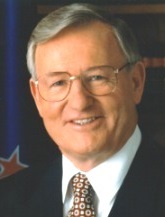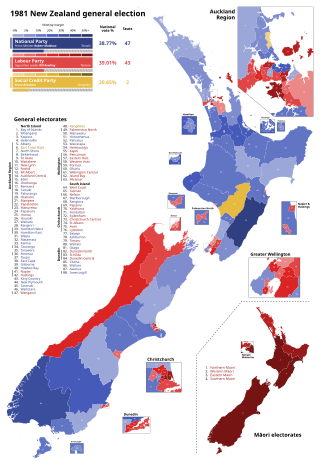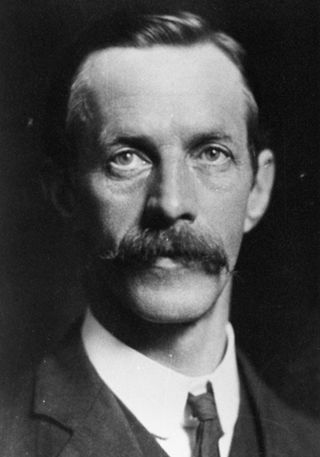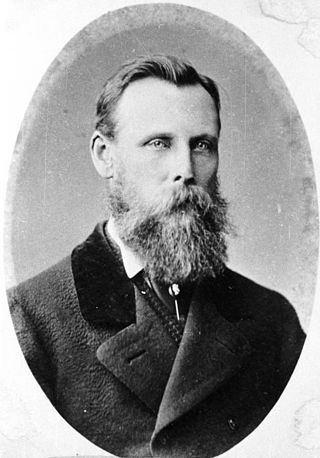Related Research Articles

Gisborne is a city in northeastern New Zealand and the largest settlement in the Gisborne District. It has a population of 38,800. Gisborne District Council has its headquarters in the central city.

The provinces of the Colony of New Zealand existed as a form of sub-national government. Initially established in 1846 when New Zealand was a Crown colony without responsible government, two provinces were first created. Each province had its own legislative council and governor. With the passing of the New Zealand Constitution Act 1852 the provinces were recreated around the six planned settlements or "colonies". By 1873 the number of provinces had increased to nine, but they had become less isolated from each other and demands for centralised government arose. In 1875 the New Zealand Parliament decided to abolish the provincial governments, and they came to an end in November 1876. They were superseded by counties, which were later replaced by territorial authorities.

The 1990 New Zealand general election was held on 27 October to determine the composition of the 43rd New Zealand parliament. The governing Labour Party was defeated, ending its two terms in office. The National Party, led by Jim Bolger, won a landslide victory and formed the new government.

The 1981 New Zealand general election, held on 28 November 1981, was a nationwide vote to determine the shape of the 40th New Zealand Parliament. It saw the governing National Party, led by Robert Muldoon, win a third term in office, but the opposition Labour Party, led by Bill Rowling, won the largest share of the votes cast.

The 1908 New Zealand general election was held on Tuesday, 17 and 24 November and 1 December in the general electorates, and on Wednesday, 2 December in the Māori electorates to elect a total of 80 MPs to the 17th session of the New Zealand Parliament. A total number of 537,003 (79.8%) voters turned out to vote.

William Gisborne was the first New Zealand Cabinet Secretary from 1864 to 1869, Colonial Secretary of New Zealand from 1869 to 1872, and Minister of Public Works between 1870 and 1871. The city of Gisborne in New Zealand is named after him.

The East Coast Main Trunk (ECMT) is a railway line in the North Island of New Zealand, originally running between Hamilton and Taneatua via Tauranga, connecting the Waikato with the Bay of Plenty. The ECMT now runs between Hamilton and Kawerau, with a branch line to Taneatua from the junction at Hawkens. The line is built to narrow gauge of 1,067 mm, the uniform gauge in New Zealand. It was known as the East Coast Main Trunk Railway until 2011, when the word "Railway" was dropped.

East Coast is a New Zealand parliamentary electorate, returning one Member of Parliament to the New Zealand House of Representatives. The electorate first existed from 1871 to 1893, and was recreated in 1999. The current MP for East Coast is Dana Kirkpatrick of the National Party, who has held office since 2023.

William Douglas Lysnar, known as Douglas Lysnar, was a New Zealand politician of the Reform Party.

Arthur Shapton Richards was a New Zealand politician of the Labour Party.
Waiapu was a New Zealand parliamentary electorate in the Gisborne – East Coast Region of New Zealand, from 1893 to 1908.
Totara was a parliamentary electorate in the West Coast of New Zealand from 1871 to 1881. It was represented by two Members of Parliament

William Kelly was an Irish migrant to New Zealand, and became a businessman, soldier and politician.
George Henry Tribe was a Member of Parliament from the Westland District of New Zealand. While living in Christchurch, he bought its first evening newspaper, The Evening Mail. After it failed, he moved to the West Coast. He represented the Totara electorate from 1871 to 1877, when he died.

Gerard George Fitzgerald was a 19th-century Member of Parliament in New Zealand. Like his brother James FitzGerald, he was a journalist of considerable ability, and co-founded The Southland Times in 1862. For the last 19 years of his life, he was editor of The Timaru Herald.

Joseph Grimmond was a gold miner and politician from the West Coast, New Zealand. He was mayor of Ross for many years, represented the Hokitika electorate in the House of Representatives for one term, and was later called to the Legislative Council.
The 5th New Zealand Parliament was a term of the New Zealand Parliament. Elections for this term were held in 68 European electorates between 14 January and 23 February 1871. Elections in the four Māori electorates were held on 1 and 15 January 1871. A total of 78 MPs were elected. Parliament was prorogued in December 1875. During the term of this Parliament, six Ministries were in power.

George Bentham Morris was a 19th-century Member of Parliament from the Gisborne and Bay of Plenty regions of New Zealand.
James Marshall was a member of the New Zealand Legislative Council.

The 1889 East Coast by-election was a by-election held on 13 December 1889 in the East Coast electorate during the 10th New Zealand Parliament.
References
- ↑ Wilson, James Oakley (1985) [First ed. published 1913]. New Zealand Parliamentary Record, 1840–1984 (4th ed.). Wellington: V.R. Ward, Govt. Printer. p. 241. OCLC 154283103.
- ↑ "Untitled". Wanganui Herald. 5 May 1877.
- ↑ "Hon Mr Gisborne's Election". The Press. 12 May 1877.
- ↑ "Totara Election". West Coast Times. 2 May 1877.
- ↑ "Hokitika". Thames Star. 17 April 1877.